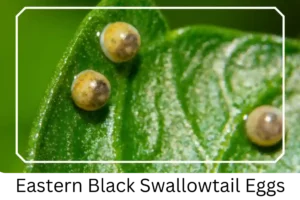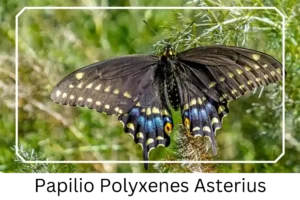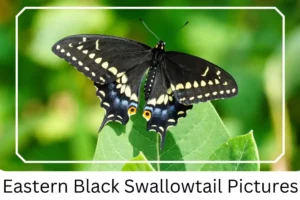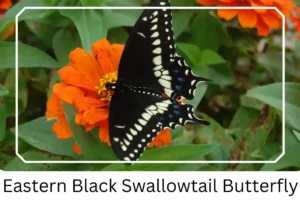Eastern Black Swallowtail (Papilio polyxenes asterius)
The Eastern Black Swallowtail, a magnificent subspecies of the Black Swallowtail butterfly, captivates enthusiasts and casual observers alike with its striking beauty. Despite its allure, it sometimes garners attention as a pest, underscoring the complex relationship between humans and nature. This guide aims to enhance your understanding of this butterfly, from its life stages to its ecological role, making it more accessible and engaging for all readers.
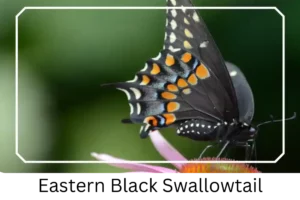
Eastern Black Swallowtail
Scientific Classification
- Family: Papilionidae
- Genus: Papilio
- Scientific Name: Papilio polyxenes asterius
Overview
Belonging to the Papilionidae family, the Eastern Black Swallowtail (Papilio polyxenes) thrives in a wide range of habitats across North America. Its lifecycle, marked by remarkable transformations and vivid colorations, offers a fascinating glimpse into the wonders of nature. Through this detailed exploration, we uncover the unique characteristics that define this species, shedding light on its beauty and survival strategies.
Description and Identification
Caterpillar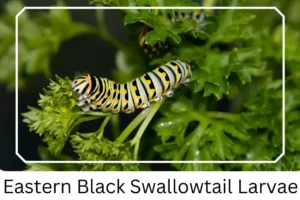
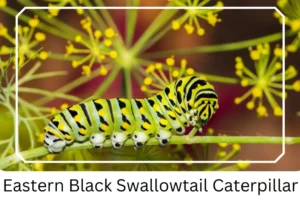
Initially, young caterpillars boast a predominantly black color with a distinctive white saddle, a result of uric acid deposits. This feature protects them from phototoxic chemicals. As they mature, the larvae transition to a green hue, adorned with black bands and yellow spots, showcasing nature’s palette in their development.
Pupa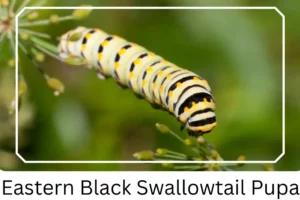
The pupae of the Eastern Black Swallowtail present a color variation that reflects their generational timing. Those from overwintering generations exhibit a brown color, while others may vary between brown and green, accented with yellow markings, mirroring the adaptability of this species.
Adult Butterfly
Sexual Dimorphism: This species exhibits sexual dimorphism, where males and females display distinct color patterns, underscoring nature’s diversity.
Color and Appearance: In their majestic flight, the butterflies reveal black wings punctuated with two rows of yellow spots and lower blue markings. Males flaunt larger, brighter spots compared to the smaller, lighter spots of females. The inner hind margins of the wings feature red spots encircled by a black ‘bull’s eye,’ adding to their intricate appearance. When the wings are closed, they reveal bright orange spots interlaced with powdery blue patches, a testament to their intricate beauty.
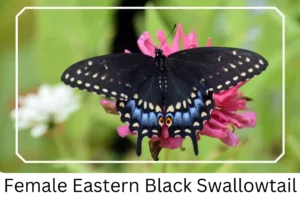
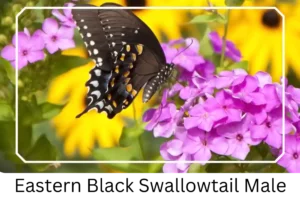 Average Wingspan: Spanning between 6.9 cm to 8.4 cm (2.71 – 3.30 in), their wingspan highlights their presence in the wild.
Average Wingspan: Spanning between 6.9 cm to 8.4 cm (2.71 – 3.30 in), their wingspan highlights their presence in the wild.
Flight Pattern: Their flight is fast and agile, showcasing their adaptability and survival instincts.
Quick Facts | |
| Habitat | They flourish in diverse environments, from uplands to wet areas, including fields, weedy areas, flatwoods, gardens, and roadsides. |
| Predators | Birds are their primary predators, highlighting the predator-prey dynamics in their ecosystem. |
| Lifespan of Adults | Adults live for 6 to 14 days, a brief yet vital period for reproduction. |
| Host Plants | They rely on plants like Mock bishopweed, Spotted water hemlock, Canby’s dropwort, Queen Anne’s lace, and Water cowbane for laying eggs. |
| Adult Diet | Adults feed on nectar from plants such as milkweed, clover, phlox, and thistles, playing a role in pollination. |
How to Identify Eastern Black Swallowtail?
Identifying the Eastern Black Swallowtail is an engaging experience, marked by observing distinct stages and color patterns. Initially, spotting the unique caterpillars with their black and white markings serves as a clue. As they mature, their transition to green with decorative bands and spots becomes a telltale sign. The adult butterflies’ sexual dimorphism, with differences in the size and brightness of yellow spots between males and females, further aids in identification. The presence of red spots with a black center on the inner margins of the hind wings, along with the distinctive color patterns when the wings are closed, are definitive characteristics. Observing these features in their preferred habitats, such as uplands and wet areas, can significantly increase the chances of successfully identifying these beautiful creatures.
Did You Know?
- The name “Papilio” is Latin for butterfly, while “polyxenes” is inspired by Polyxena, the youngest daughter of the Trojan king Priam, according to Greek mythology. This naming reflects the blend of natural beauty and mythological lore.
- The Eastern Black Swallowtail’s ability to produce different colored pupae based on the season is a fascinating adaptation to their environment, showcasing nature’s ingenuity in survival strategies.
Conclusion
The Eastern Black Swallowtail butterfly is more than just a fleeting beauty in our gardens and natural landscapes. Its lifecycle, from the uniquely marked caterpillars to the vibrant adults, offers a captivating story of adaptation and survival. Understanding and appreciating this butterfly’s characteristics and ecological role can deepen our connection to the natural world, reminding us of the intricate balances within ecosystems and the importance of preserving biodiversity.
Eastern Black Swallowtail Pictures

Scientific Classification

- Family: Papilionidae
- Genus: Papilio
- Scientific Name: Papilio polyxenes asterius

